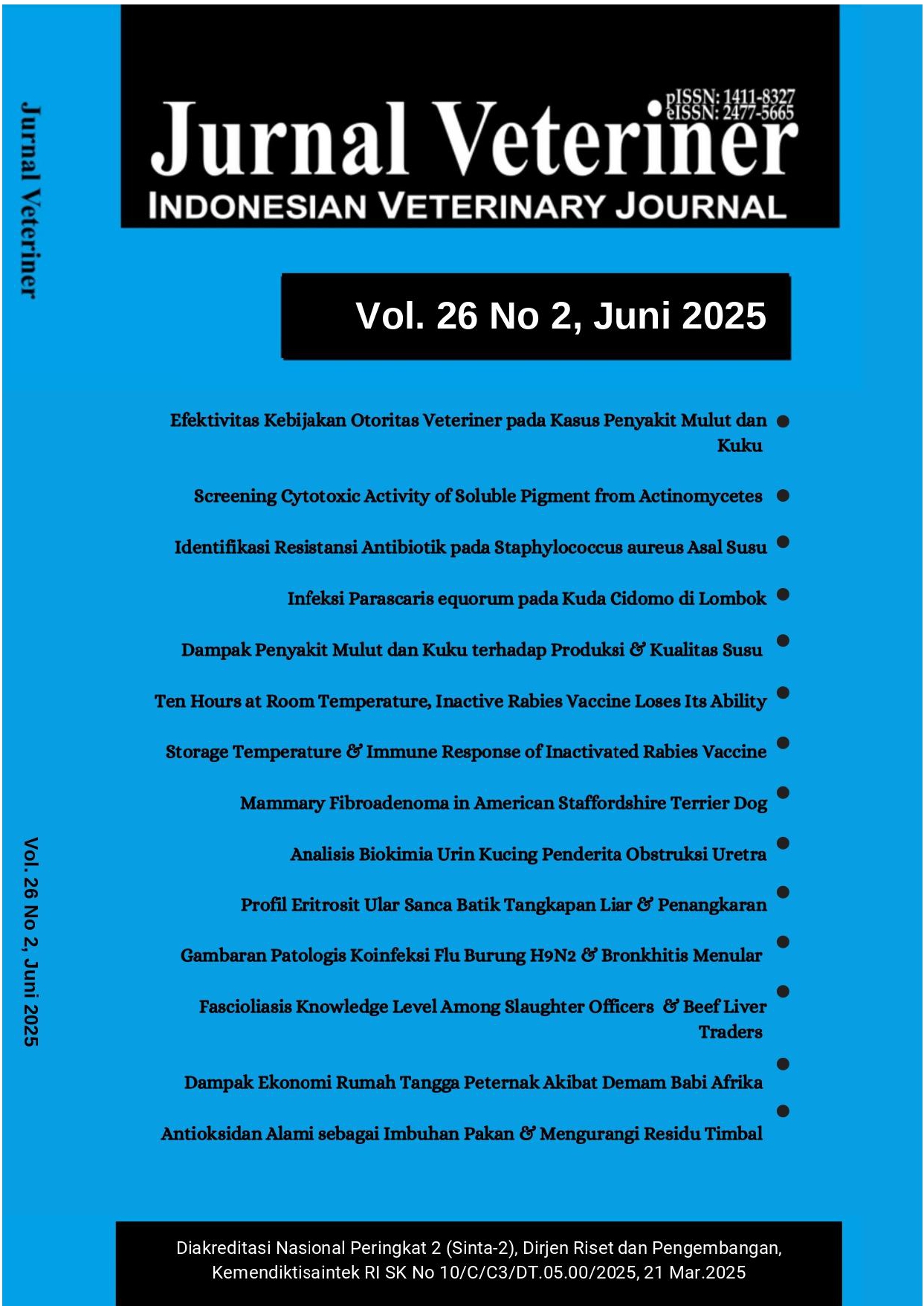The Effect of Inactivated Rabies Vaccine Storage Temperature on the Immune Response of BALB/c Mice Post Vaccination
Abstrak
More than 95% of human rabies cases in the world are transmitted by dogs. Vaccination is the main program in controlling rabies in animals. During vaccine distribution, especially in remote or resource-limited areas, vaccines may be temporarily exposed to temperatures outside the recommended limits (2–8°C) due to challenges in maintaining the cold chain, such as unreliable electricity, and inadequate storage facilities. This study aims to test the thermotolerance of the inactivated rabies vaccine by evaluating its immune response through antibody titers detected in BALB/c mice after exposure to higher storage temperatures (27°C and 37°C) for two hours, simulating real-world logistical challenges. Measurement of antibody titers in serum was detected using an enzyme-linked immunosorbent assay (ELISA). Comparison of antibody titers was analyzed statistically using repeated-measures ANOVA and Post Hoc Test Pairwise Comparisons and Bonferonni. In addition, histological examination of the spleen organ was carried out by looking at the presence of germinal centers in the white pulp area which is an indication of a response to antigenic stimuli. The study demonstrates that short-term exposure (2 hours) of the inactivated rabies vaccine to higher temperatures (27°C and 37°C) does not significantly reduce its immunogenicity compared to storage at recommended temperatures (2–8°C), as evidenced by comparable antibody titers and germinal center formation in BALB/c mice. These findings suggest that the vaccine retains its antigenic potency during brief deviations outside of cold chain conditions, such as those that occur during transport or temporary storage. However, further research is needed to evaluate the impact of long-term exposure to non-recommended temperatures.




